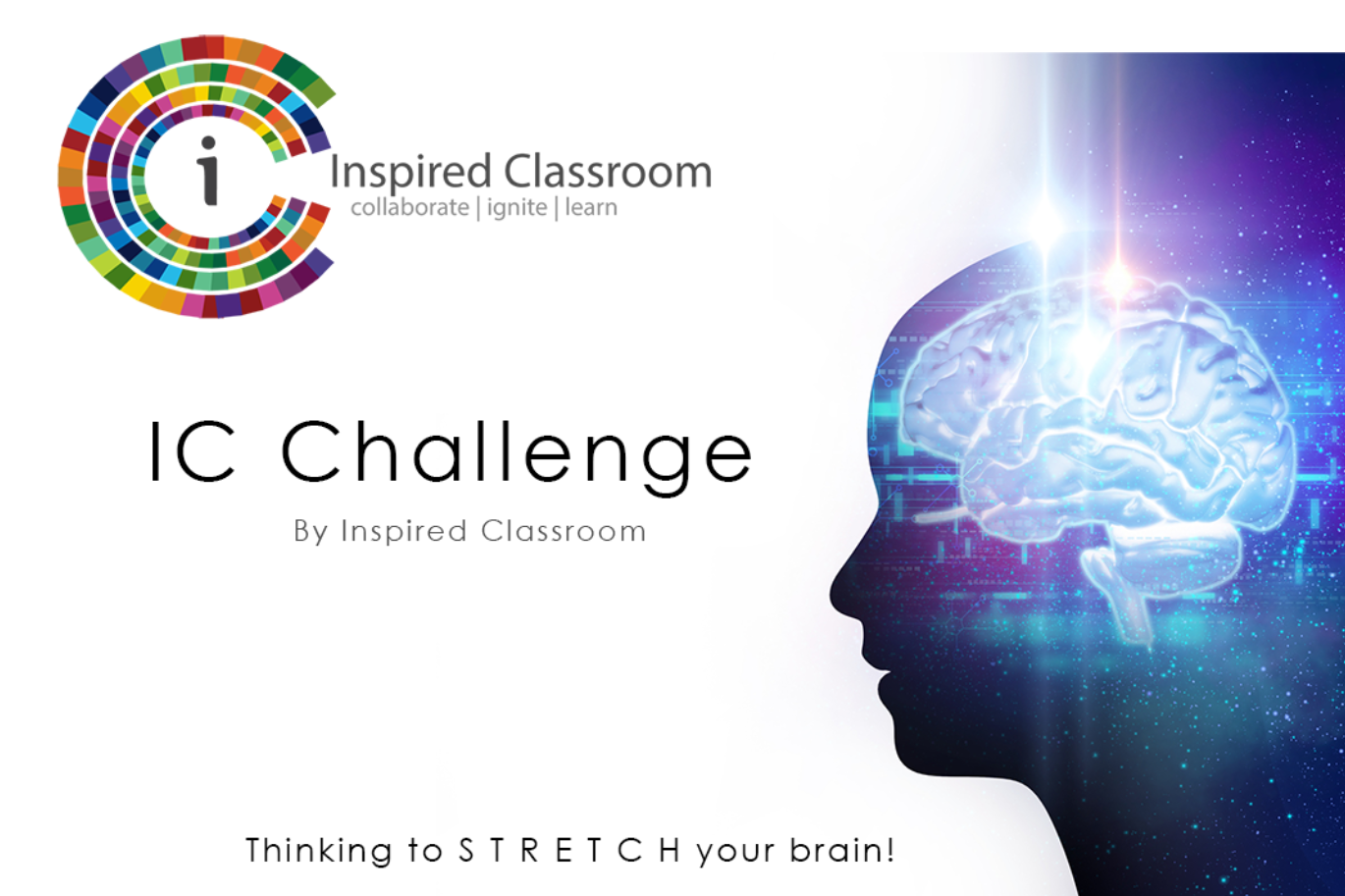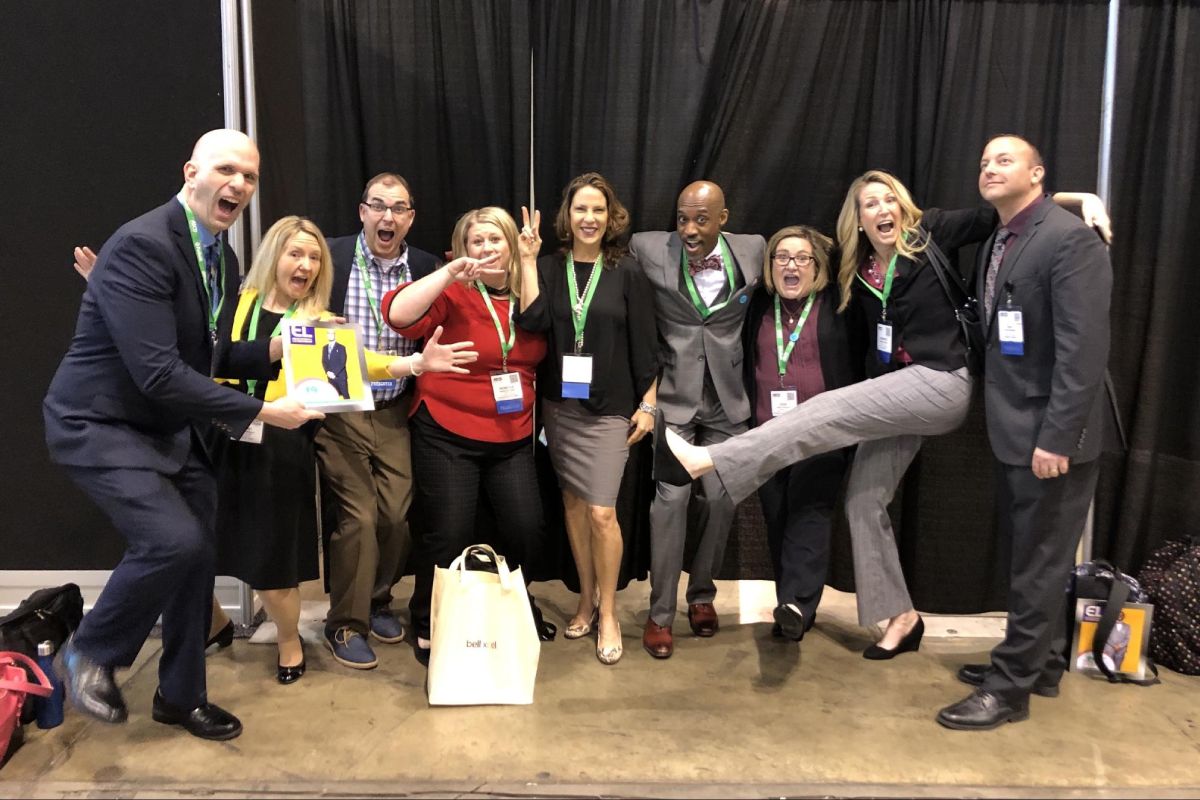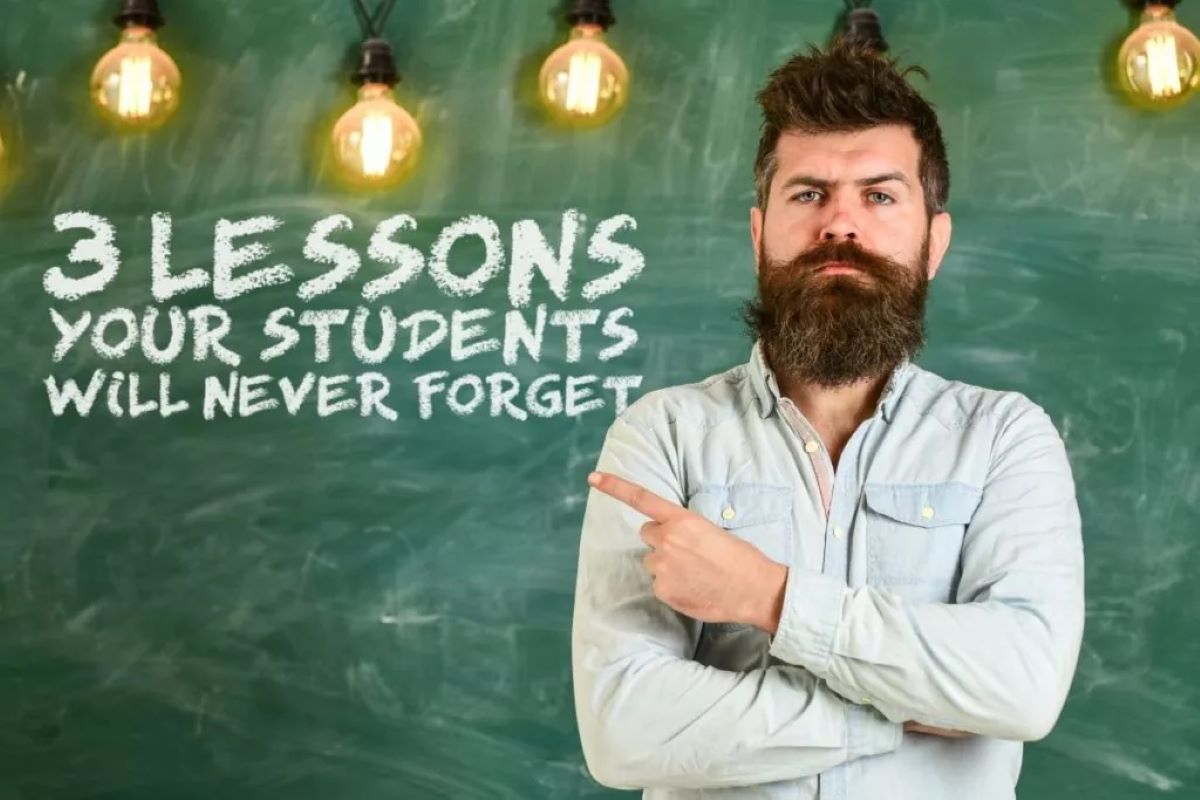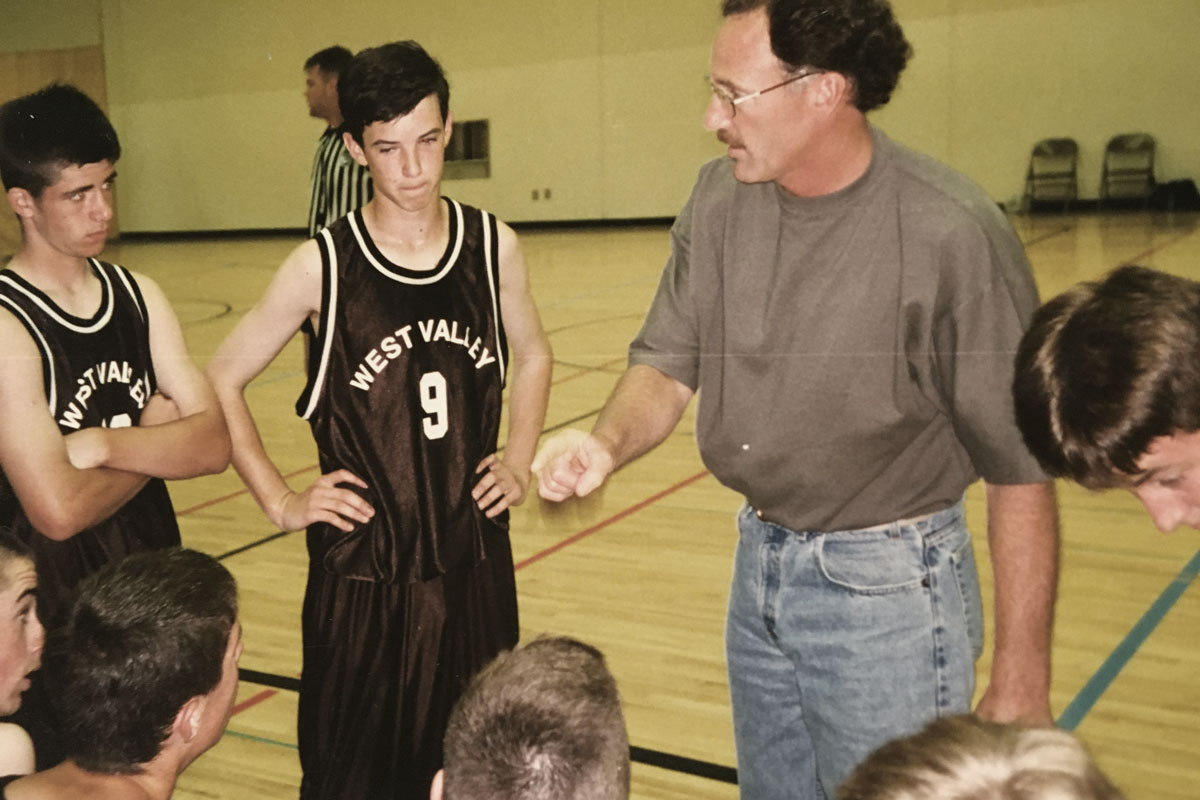The Instructional Coach “Intentionally Pursuing Mastery”
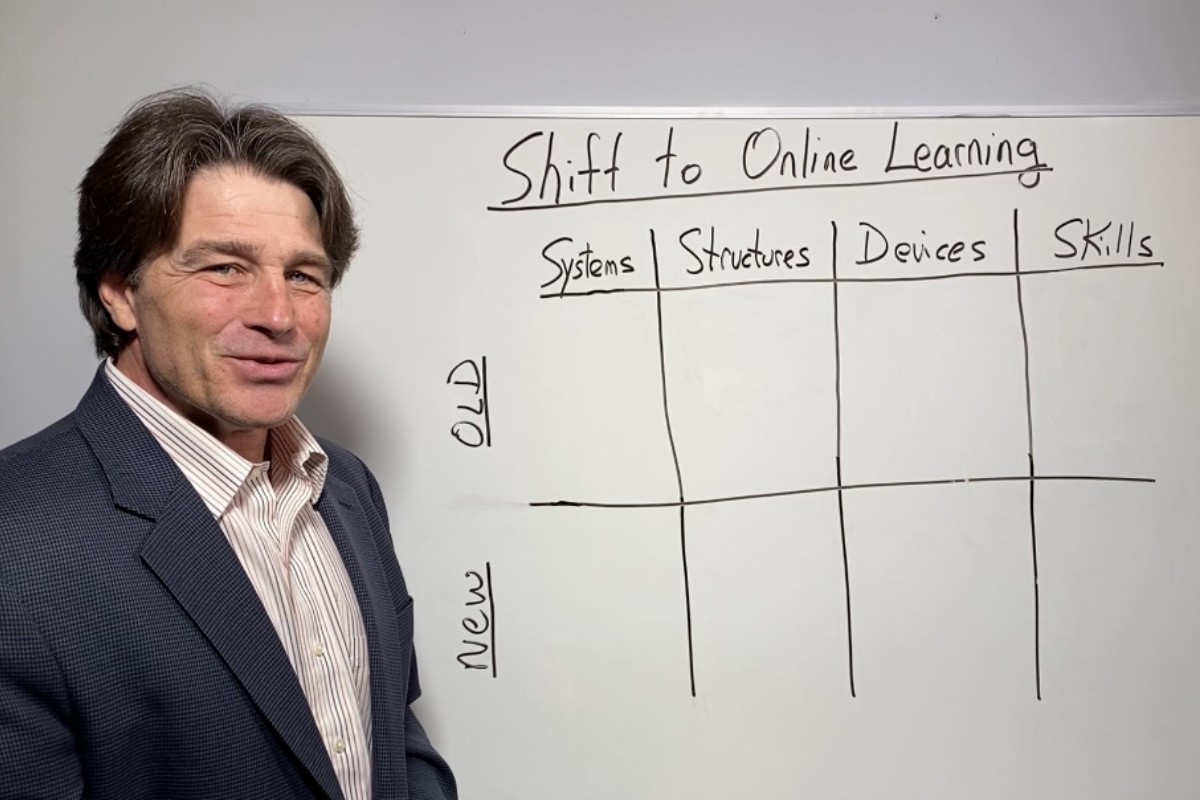
Caution! Instructional coaching is big and there is a lot to learn. Go about it like you would eat an elephant, one bite at a time. Take a professional inventory to create clarity about your strengths and passions. Set yourself up to feed them.
It is common knowledge that achieving mastery in any field takes many hours of practice. It is also known that time is only one factor. Intentionality is a must. The budding instructional coach must go about their practice with a sensibile and intentional use of their time. I offer instructional coaches a device to help them planfully guide themselves as they vulnerably engage their next identified growth spots. This device can serve to provide direction, allowing the instructional coach to mash up their goals and actions with the systems, structures, devices and skills that are in play in their role.
From the beginning of my teaching career, I had a strong passion for Social Emotional Learning. I was coached for many years on how to coach others with this important piece in the forefront. A bonus was that through intentional practice as a classroom teacher, I had developed a strong grasp on teacher language in the classroom. Not surprisingly, I also found that when I began working as an instructional coach, I had a knack for hearing teachers, recording their words and quickly assessing their needs.
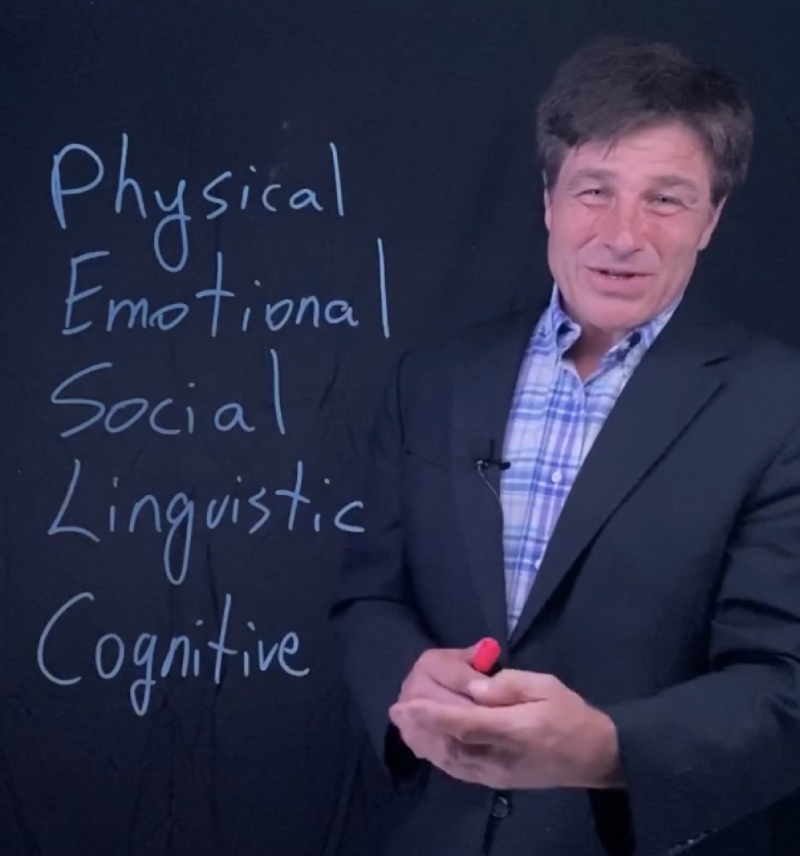
As a result of conversations with my mentor, I created a chart like the one below. This gift from my coach has been one of my go to tools as I moved from the classroom teacher role into the instructional coaching role. She had instilled in me that teaching was a two sided coin, both sides of the coin needing continuous attention. On one side existed the work around relationship building and on the other side there was always work to do on systems, structures, devices, and skills. The perpetual work was based on the feedback received from the actions observed. Systems encompassed the actions that had a predictable sequence to them. They could be grooved in ourselves and in the people with whom we worked. Structures were at times tangible, like a mail distribution box with all the students’ names in designated spaces. Structures were also part of our lessons and meetings times. To the onlooker these sorts of structures may not be even seen when addressed with fluidity. Even though one could not necessarily touch them, they were there. The master practitioner leaned on structures to create stability and consistency. Devices too could be both tangible and intangible. For instance, a chime is an auditory device used to gain the attention of a group and clearly tangible. On the other hand, listening, which is commonly acknowledged as a skill, is also used as a device in certain situations to achieve a goal and is intangible. The number of skills in play to master teaching are a mindboggler, especially when someone first starts out in a classroom. Skills like holding your body with confidence or smiling might seem small, but to the new practitioner they are a hurdle that has to be overcome. Then of course there are the more complex skills such as providing positive descriptive feedback. And that one will take a lifetime to master!
Note that in the chart only one goal is targeted. I recommend working on one goal at a time and having a plan to measure that goal. Actions are listed in the pertinent column. The work with the chart helped me establish a focus, allowing me to be intentional with my actions. I would refer to the chart when planning encounters and then look it over when reflecting on them. Like I said earlier, I was already strong in this area. I was aiming for mastery.
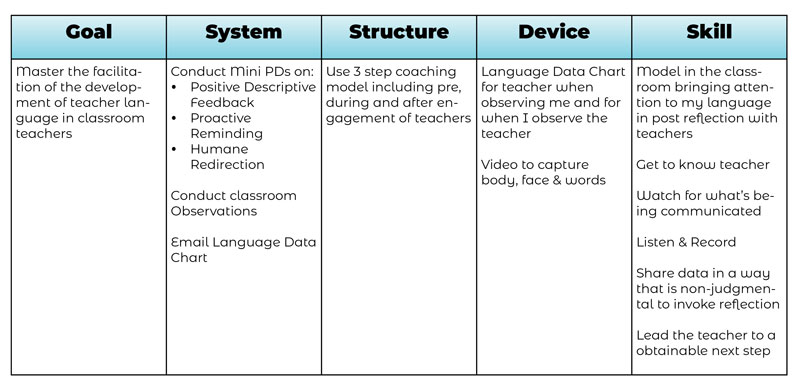
I sought mastery in other areas as the years went by. I returned to this chart. A lot of times, much of what existed under each column remained with minor tweeks. This was mostly true in the skills column.
Let’s look at another example. This one came about when I became aware that a lot of the teachers with whom I was working were falling short because of poor planning. This was especially true for teachers new to the profession. That meant that I had to get better at facilitating their growth around it. I set a goal to “Master the facilitation of development of planning in classroom teachers.” Like in the previous example, I created a clear goal and entered the actions I would take that would help me stay focused on that goal. Modeling, of course, showed up as it does with everything I do. I would model how to plan with teachers. I also found that teachers often lacked a manageable device for planning and I would turn them on to one that I used. If they had a planning device they were required to use, I would use it.
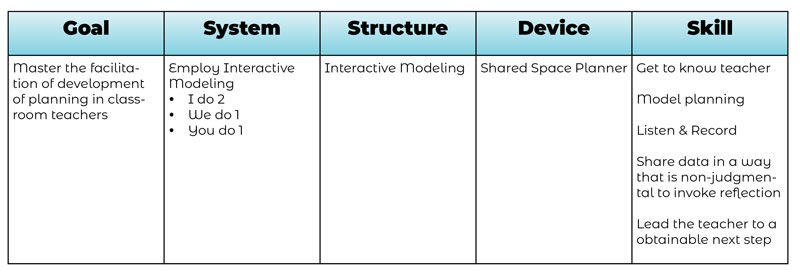
It is important to acknowledge that in our effort to master goals such as “Master the facilitation of the development of teacher language in classroom teachers.” or “Master the facilitation of development of planning in classroom teachers” that there are many little pieces that continue to be practiced. These pieces, actions, when repeated purposefully over and over get mastered (see the list below of Skills to Master). They become part of us. At some point there is a crossing over to a place that is hard to explain. It’s a place where unconscious performance occurs. To the onlooker it may appear that what they see is the product of some natural gift. It is not. Of course, there may be some inherent qualities in the performer that aid the development, but rest assured, true mastery happens from repeated intentional practice.
To this day I use this chart for goals that I set for myself (see the list below of Goals to be Considered). The chart has evolved to be a known element among the educators with whom I work. It has collectively been internalized. There are times when I show up at a school and the chart is already sketched out on a whiteboard or chart. Sometimes the welcoming group has an idea to explore in mind and sometimes they’re still unsure of what to examine. We collaborate and come to a consensus around what it is that needs to be worked on knowing that we have an approach to help us. As a team we can sketch out a course of action that will lead to mastery.
Just today in a conversation about the writing of this article with a principal with whom I’ve worked the last fifteen years, she remarked, “Looking at my goals or change, I automatically picture the chart in my head. I create the chart with my laptop, not the chart paper we used to use, and get to work, knowing that I am on my way.”
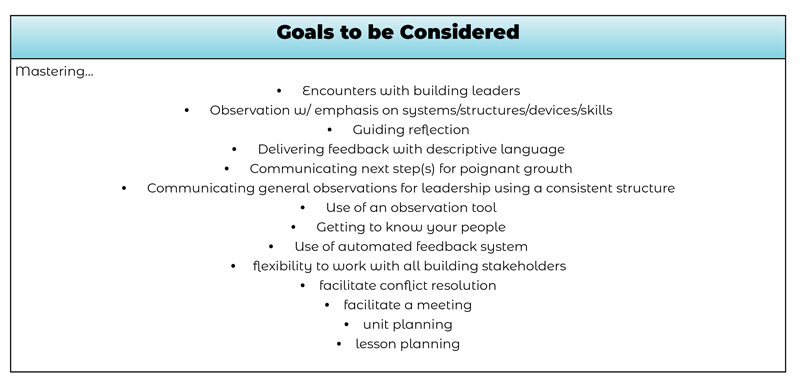
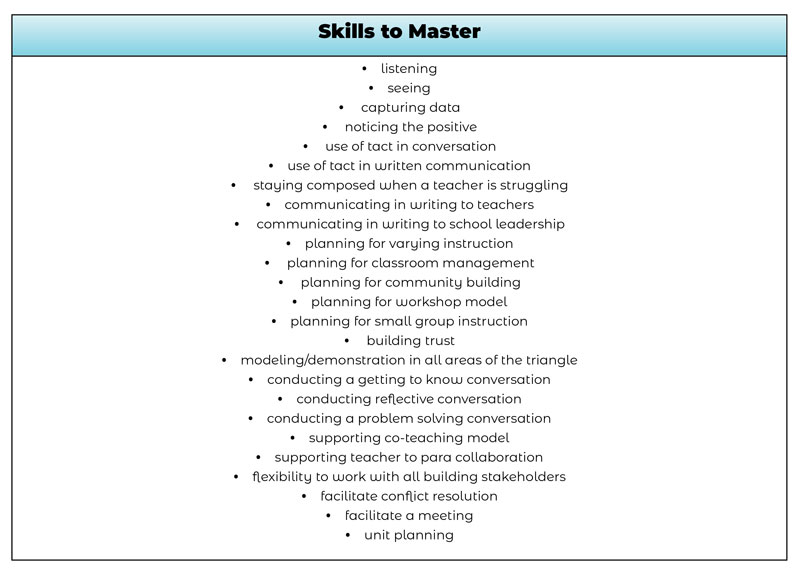
This article is available and can be accessed in Spanish here.



